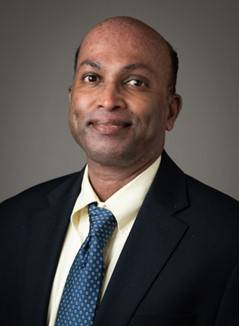Biomedical Engineering
Making Hip and Knee Replacement Last Forever
by eliminating biologic responses to total joint implants and improving surgical techniques |
 |
|
Kaushik Parthasarathi, PhD, MBA |
Research interests
Primary research is in inflammatory responses and signaling in microvessels. Specific areas of research include microvascular barrier regulation and resolution, signaling leading to development of pulmonary artery hypertension, intercellular communication, alveolar-vascular crosstalk, inositol-trisphosphate-dependent mechanisms, and confocal and wide-angle fluorescence imaging of blood vessels in situ.
Education
B.Engg, Instrumentation and Controls Engineering, Barathiar University, India, April 1989
M.S. Biomedical Engineering, Medical College of Virginia, Virginia Commonwealth University, Richmond, VA, May 1993
PhD, Bioengineering, The Pennsylvania State University, University Park, PA, August 1999
MBA, The University of Memphis, Memphis, TN, May 2017
Brief Research Summary
Our laboratory is involved in the delineation of signalling mechanisms underlying microvascular permeability changes in response to inflammatory insults. We have established a novel paradigm that cell-cell communication is linked to paracellular leakiness in pulmonary microvessels. Current research involves defining the cellular mechanisms that underlie the changes in vascular permeability. In addition, additional work focusses on how proteins along the cell-cell border can be modulated to improve microvascular wall strength and reverse permeability increases. Moreover, other research also aims to define the role of microvascular structural modifications and the underlying signalling in the development of pulmonary artery hypertension. The bulk of the experiments involve defining interactions among proteins and second messengers using fluorescence microscopy in real time via in situ blood vessels. Thus far, several post-doctoral fellows, graduate students, summer and rotational students, and medical students have been trained in the above research areas in the laboratory.
Publications >